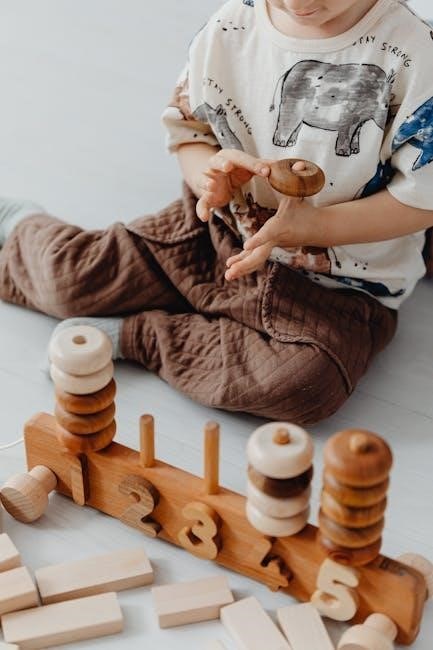The Kitchener Stitch is a grafting technique used to seamlessly join two sets of live knitting stitches, creating an invisible seam. Perfect for projects like socks or baby shoes, it ensures a smooth, professional finish without bulky edges. This method is especially popular for its invisibility and comfort in wearables, making it a must-learn skill for knitters seeking polished results.
1.1 Definition and Purpose
The Kitchener Stitch, also known as grafting, is a technique used to join two sets of live knitting stitches seamlessly. Its primary purpose is to create an invisible seam, ideal for projects like socks, baby shoes, or garments requiring a smooth finish. This method ensures that the joined edges are comfortable and nearly undetectable, making it a must-learn skill for knitters. The stitch is particularly useful for stockinette stitch fabrics and works well for both flat and circular knitting projects, providing a professional and polished result.
1.2 Importance in Knitting Projects
The Kitchener Stitch is essential for creating seamless, invisible joins in knitting projects, ensuring a professional finish. It is particularly vital for garments and accessories like socks, baby shoes, and hats, where bulkiness can be uncomfortable. This technique prevents visible seams, making it ideal for stockinette stitch fabrics and projects requiring a smooth, polished appearance. By mastering the Kitchener Stitch, knitters can achieve a flawless connection between two sets of live stitches, enhancing both the comfort and aesthetic of their work. It is a fundamental skill for any knitter aiming to produce high-quality, finished items.
1.3 Brief History and Origins
The Kitchener Stitch, also known as grafting, has its roots in traditional knitting techniques. Originally called “grafting,” it was later renamed after Lord Kitchener, a British military leader, who promoted its use during World War I to create seamless socks for soldiers. This method ensured comfort and durability, avoiding bulky seams that could cause discomfort. Over time, the technique evolved and became a standard skill in knitting, particularly for projects requiring invisible joins. Its enduring popularity stems from its practicality and the professional finish it provides, making it a timeless tool for knitters worldwide.
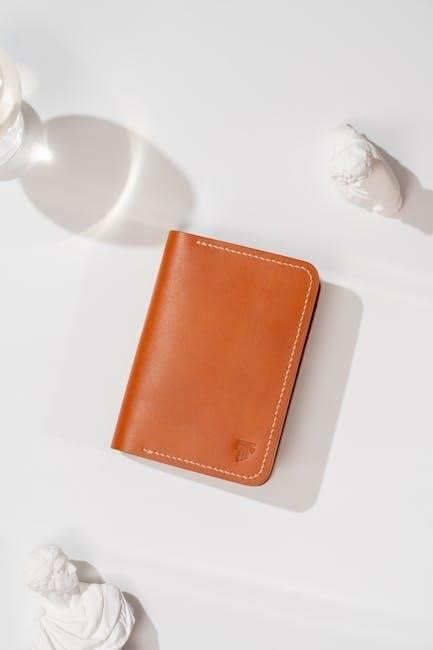
Materials and Tools Needed
To master the Kitchener Stitch, you’ll need a tapestry needle, scissors, and measuring tools. Use a yarn tail three times the length of the stitches to ensure smooth grafting.
2.1 Yarn and Needles Requirements
For the Kitchener Stitch, use a yarn tail three times the length of the section you’re grafting. Choose a blunt-tipped tapestry needle to weave the yarn seamlessly. Ensure your knitting needles match the project’s gauge, as mismatched sizes can affect the stitch alignment. The yarn should be the same type and weight as the project to maintain consistency. This method works best with stockinette stitch, making it ideal for flat knitting or projects worked in the round. Proper materials ensure a smooth, invisible seam, essential for professional-looking results in garments like socks or baby shoes.
2.2 Tapestry Needle for Grafting
A blunt-tipped tapestry needle is essential for the Kitchener Stitch, as it prevents splitting the yarn or stitches. Choose a needle with an eye large enough to accommodate your yarn type. Thread the yarn tail through the needle, ensuring it’s long enough to complete the graft—typically three times the length of the section being joined; The tapestry needle’s blunt tip allows smooth weaving between stitches without damaging the fabric; Using a contrasting yarn color for the tail can help visibility during the process. This tool is crucial for creating an invisible, professional-looking seam in your knitting projects.
2.3 Scissors and Measuring Tools
Sharp scissors are necessary for cutting the yarn tail to the correct length, ensuring it’s long enough for grafting without excess. A ruler or measuring tool helps accurately measure the yarn tail, typically three to four times the width of the stitches being joined. This ensures there’s enough yarn to complete the seam without running out. Using a measuring tool prevents overestimating or underestimating the tail length, which could lead to a messy or incomplete graft. Proper preparation of the yarn tail is crucial for a smooth Kitchener Stitch process, making scissors and measuring tools indispensable in your toolkit.
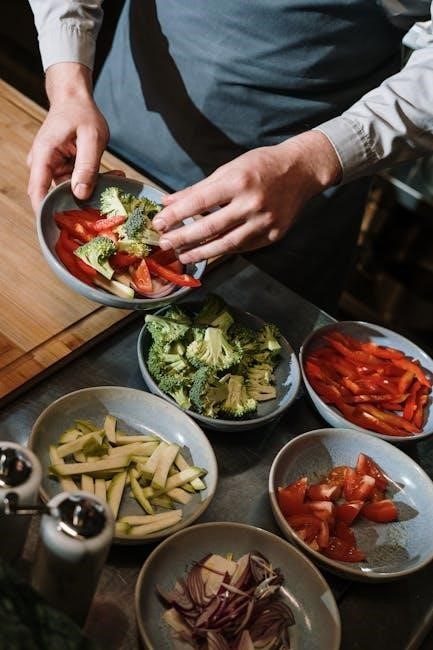
Preparation for Kitchener Stitch
Ensure live stitches are ready by knitting to the desired length. Align the two knitting pieces with wrong sides facing each other. Cut the yarn tail, leaving enough length for grafting, and thread it onto a tapestry needle. Proper setup is key for a seamless join.
3.1 Setting Up Your Knitting Pieces
To set up your knitting pieces for the Kitchener Stitch, align the two pieces with their wrong sides facing each other and right sides outward. Ensure the live stitches are evenly distributed on two parallel needles. Place the front and back needles side by side, making sure the stitches are aligned properly. This setup ensures a seamless join. Thread the yarn tail, cut to three times the length of the section to be grafted, onto a tapestry needle. Proper alignment and preparation are crucial for achieving an invisible seam.
3.2 Ensuring Live Stitches are Ready
Before grafting, ensure all live stitches are on knitting needles and ready for the Kitchener Stitch. Verify that the stitches are evenly distributed and not twisted. Wrong sides should face each other, with the right sides of the fabric visible. If necessary, transfer stitches to ensure an even number on each needle. Double-check that no stitches are dropped or misaligned. For safety, consider placing a lifeline in the row below where you’ll graft, allowing you to undo work if needed. Proper preparation of live stitches is essential for a smooth and invisible seam.
3.4 Cutting the Yarn Tail
Cut the working yarn, leaving a tail approximately three to four times the length of the section you plan to graft. This ensures enough yarn to complete the Kitchener Stitch without running out. The tail should be long enough to weave in securely but not so long that it becomes cumbersome. Thread the yarn tail onto a blunt-tipped tapestry needle before starting the grafting process. Keep the tail at the back of your work to maintain a neat appearance. Properly managing the yarn tail is crucial for a smooth and invisible seam in your knitting project.

Step-by-Step Instructions
Thread the tapestry needle, insert knitwise into the first stitch, then purlwise into the next. Repeat on the back needle, alternating sides to create a seamless join.

4.1 Threading the Tapestry Needle
Begin by cutting the working yarn, leaving a tail approximately three to four times the length of the section to be grafted. Thread this yarn tail through the eye of a blunt-tipped tapestry needle. Ensure the yarn is not too long, as it may become cumbersome to handle. Hold the needle comfortably, with the yarn tail secured behind the work. This step is crucial for maintaining even tension and control during the grafting process. Always double-check that the yarn tail is sufficiently long to complete the graft without running out midway.
4.2 Inserting the Needle Knitwise
Insert the tapestry needle into the first stitch on the front needle as if to knit (from left to right on the front side). Keep the stitch on the needle and gently pull the yarn through. This step mirrors a standard knit stitch, ensuring the graft aligns seamlessly with the knitting. Maintain even tension to prevent puckering. Repeat this process for each subsequent stitch, moving knitwise on the front needle and purlwise on the back needle. This alternating pattern creates a smooth, invisible join. Work methodically to keep track of your place and ensure consistency in the grafting process.
4.3 Inserting the Needle Purlwise
After working knitwise on the front needle, insert the tapestry needle purlwise into the next stitch on the back needle (from right to left on the back side). Slip the stitch off the needle as you pull the yarn through. This step mirrors a standard purl stitch, maintaining the fabric’s texture. Ensure the yarn lies evenly between the two pieces. Alternate between knitwise on the front and purlwise on the back to create a seamless join. Keep the tension consistent to avoid puckering or looseness. This alternating pattern ensures the graft blends invisibly with the surrounding knitting.
4.4 Repeating the Process
Continue alternating between knitwise and purlwise insertions, moving from front to back needles. After each pair of stitches, gently pull the yarn to maintain even tension. Ensure the seam remains flat and invisible by keeping the yarn taut but not overly tight. Repeat steps 4.1 to 4.3 until all stitches are grafted. As you progress, periodically check the fabric to ensure consistency and adjust tension if needed. This rhythmic process requires patience and attention to detail to achieve a professional finish. The goal is to create a seamless join that mirrors the knitted fabric perfectly.
4.5 Completing the Graft
Once all stitches are grafted, secure the last stitch by pulling the yarn gently to tighten. Weave the yarn tail through the fabric to hide it, ensuring the seam remains invisible. Check the graft for even tension and adjust if necessary. The completed graft should appear as a seamless continuation of the knitting. For a polished finish, use a tapestry needle to weave in the yarn tail. Block the project if desired to even out the fabric. This step finalizes the Kitchener Stitch, leaving a professional and invisible join that complements the overall knitting project.
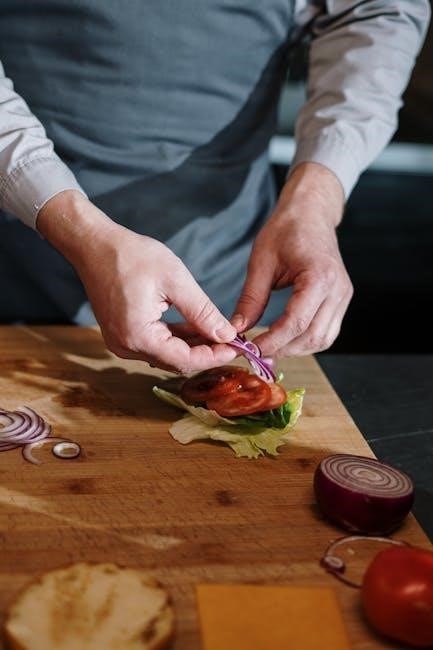
Tips for Success
Work in a quiet environment to maintain focus. Use lifelines for safety and to easily undo mistakes. Keep tension even to ensure a seamless, invisible graft.
5.1 Working in a Quiet Environment
Working in a quiet, distraction-free environment is crucial for mastering the Kitchener Stitch. A calm space allows you to focus on the repetitive steps and maintain consistent tension. Minimize interruptions by choosing a time when others are less likely to disturb you. Some knitters find it helpful to use noise-canceling headphones or play soothing music to enhance concentration. Avoid working in busy or noisy areas, as this can lead to mistakes. By creating a peaceful workspace, you can ensure a smooth and successful grafting process, especially when working on intricate projects like baby shoes or socks.
5.2 Using Lifelines for Safety
Using lifelines is a smart way to ensure safety while working on the Kitchener Stitch. A lifeline is a spare needle or thread placed in a specific row of stitches, allowing you to undo your work easily if mistakes occur. This is especially helpful for beginners or those nervous about grafting. Place a lifeline in the row you plan to graft or just below it. If errors happen, you can remove the grafting yarn and restart without unraveling the entire project. This technique provides peace of mind and saves time, making it a valuable precaution for knitters of all skill levels.
5.3 Keeping Tension Even
Keeping tension even is crucial when performing the Kitchener Stitch to ensure a seamless and invisible join. Uneven tension can lead to puckering or looseness, which may compromise the professionalism of the finished project. To maintain even tension, work slowly and consistently, pulling the yarn gently with each stitch. Avoid pulling too tightly, as this can cause the fabric to pucker, or too loosely, which may result in a visible gap. Use a tapestry needle to guide the yarn smoothly, and keep the working yarn at a consistent length. Even tension ensures a flawless finish, making the graft nearly undetectable in the final garment.

Troubleshooting Common Mistakes
Common mistakes include uneven tension, miscounting stitches, or incorrect needle insertion. Fix errors by gently undoing stitches or adjusting yarn tension. Proper technique ensures a seamless join.
6.1 Identifying and Fixing Errors
Identifying errors in Kitchener Stitch is crucial for a seamless result; Common mistakes include uneven tension, miscounting stitches, or incorrect needle insertion. To fix, gently undo stitches to the error point and rework. If tension is too tight, it may cause puckering; if too loose, the seam may be visible. Use a lifeline to safely undo stitches without losing work. Always count stitches before grafting to ensure accuracy. Correcting errors early prevents major rework and ensures a professional finish. Patience and attention to detail are key to mastering this technique.
6.2 Adjusting Tension Issues
Tension issues are common in Kitchener Stitch, leading to puckering or loose seams. To address this, work slowly, ensuring even yarn tension with each stitch. If the seam feels too tight, gently pull the yarn tail to loosen stitches. For a too-loose seam, tighten evenly by pulling the yarn subtly. Using a tapestry needle helps maintain control. Keep the yarn at a consistent tension while grafting to avoid unevenness. Regularly check your work as you go to make adjustments early. Even tension is key to a seamless, professional-looking result in Kitchener Stitch projects;
6.3 Managing Yarn Tail Length
Properly managing the yarn tail is crucial for a smooth Kitchener Stitch. Cut the yarn tail approximately four times the length of the stitches to be grafted, ensuring it’s long enough to complete the seam without running out. Too short a tail can make grafting difficult, while too long can be cumbersome. Thread the tail onto a tapestry needle and work steadily, keeping the yarn taut but not overly tight. If the tail becomes too short, weave the remaining yarn into the seam. Proper tail management ensures a neat, invisible join, avoiding frustration during the grafting process.
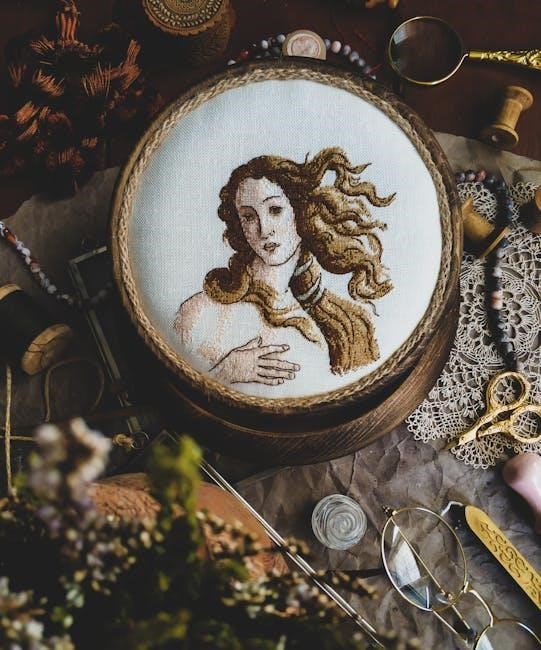
Resources and Tutorials
Find detailed Kitchener Stitch guides on Ravelry, Etsy, and Purl Soho. Video tutorials by VeryPink and Knitty offer step-by-step instructions, while PDFs provide printable, easy-to-follow patterns for practice.
7.1 Recommended PDF Guides
For clear instructions, download the Kitchener Stitch PDF guide from Ravelry or Etsy, which include step-by-step photos and tutorials. The Harry Shoe pattern PDF offers a concise guide, perfect for beginners. Purl Soho’s detailed PDF is another excellent resource, providing written instructions and visuals. These guides are ideal for offline learning, ensuring you can practice the stitch without internet access. They often include tips for common mistakes and troubleshooting, making them invaluable for mastering the technique. Printable PDFs allow you to follow along easily, ensuring a smooth grafting process for projects like socks or baby shoes.
7.2 Video Tutorials for Beginners
Video tutorials are an excellent way for beginners to master the Kitchener Stitch. Websites like Purl Soho and VeryPink offer clear, step-by-step demonstrations with close-ups, making it easy to follow along. These videos often include slow-motion sequences and detailed explanations, perfect for visual learners. Platforms like YouTube and Knitty also provide comprehensive guides, breaking down the process into manageable steps. Many tutorials emphasize the importance of maintaining even tension and using lifelines for safety. Watching a video tutorial can help you understand the rhythm of the stitch and build confidence in your grafting skills.
7.3 Online Communities and Forums
Online communities and forums are invaluable resources for mastering the Kitchener Stitch. Platforms like Ravelry and knitting forums offer extensive discussions, tips, and troubleshooting advice from experienced knitters. Many users share their personal experiences, highlighting common mistakes and solutions. These communities also provide encouragement and motivation, especially for beginners. Additionally, forums often feature links to downloadable PDF guides, step-by-step tutorials, and photos to aid learning. Engaging with these groups can help you connect with fellow knitters, share projects, and gain confidence in your grafting skills. They serve as a supportive space to ask questions and refine your technique.

Advanced Techniques
Explore grafting in the round, incorporating diverse stitches, and customizing the process for unique results, offering versatility and precision for experienced knitters seeking complex projects.
8.1 Grafting in the Round
Grafting in the round is an advanced technique that allows seamless joining of stitches in circular knitting projects. It requires aligning front and back needles carefully, ensuring stitches are evenly spaced and ready for grafting. Unlike flat projects, grafting in the round demands attention to the circular nature of the work, maintaining consistent tension to avoid puckering. A longer yarn tail is recommended to accommodate the curved edge. This method is ideal for projects like socks or hats, where a smooth, invisible seam is crucial. Practice on small swatches to master the flow and maintain even stitches throughout the process.
8.2 Incorporating Different Stitches
The Kitchener Stitch can be adapted to work with various stitch patterns, allowing for creative customization. While traditionally used for stockinette stitch, it can be modified for cables, Fair Isle, or other textures by adjusting the grafting steps to match the stitch pattern. This requires careful planning to ensure the seam remains invisible and the design flows seamlessly. Incorporating different stitches adds complexity but offers a professional finish. Knitters can experiment with contrasting yarns or intricate patterns to enhance their projects. However, this technique demands precision and patience, as mismatched stitches can disrupt the overall aesthetic. Practice on swatches to refine the process before applying it to larger works.
8.3 Customizing the Grafting Process
Customizing the Kitchener Stitch allows knitters to tailor the grafting process to their project needs. By adjusting the yarn tail length and tension, knitters can achieve a seamless join that blends with the surrounding fabric. Some knitters prefer using a contrasting yarn for visibility, while others opt for matching yarn to maintain a subtle appearance. Additionally, incorporating subtle pattern elements or texture during grafting can enhance the design. Lifelines can be used to ensure safety and ease of correction. Experimenting with these techniques enables knitters to personalize their work, making the Kitchener Stitch a versatile tool for creative knitting projects.

Creative Applications
The Kitchener Stitch is ideal for crafting seamless baby shoes, socks, and other small projects. Its invisible seam makes it perfect for creating professional-looking, comfortable wearables and accessories.
9.1 Using Kitchener Stitch in Socks
The Kitchener Stitch is a perfect technique for closing the toe of hand-knitted socks seamlessly. It ensures a smooth, invisible join that won’t irritate the wearer. By grafting the live stitches at the toe, the seam becomes nearly undetectable, providing comfort and a professional finish. This method is especially ideal for socks because it maintains the elasticity of the fabric, allowing the toe to stretch naturally. Many knitters find it a great way to practice the technique due to the small number of stitches involved. With proper tension and a yarn tail of adequate length, the Kitchener Stitch creates a flawless closure for socks.
9.2 Applying to Baby Shoes
The Kitchener Stitch is an excellent technique for finishing baby shoes, ensuring a seamless and comfortable fit. It is particularly useful for closing the toe seam, creating an invisible join that won’t irritate delicate skin. Baby shoes often have a small number of stitches, making them an ideal project for learning and mastering the Kitchener Stitch. This method maintains the elasticity of the fabric, allowing the shoe to stretch naturally. With clear instructions and a yarn tail of sufficient length, knitters can achieve a professional-looking finish. It’s a great way to practice grafting while creating adorable and functional baby shoes.
9.3 Other Knitting Projects
The Kitchener Stitch is versatile and can be applied to various knitting projects beyond socks and baby shoes. It’s ideal for joining seams in scarves, hats, and sweaters, ensuring a smooth, invisible finish. This technique is particularly useful for projects requiring a seamless join, such as cuffed gloves or toeless slippers. The Kitchener Stitch works well for both flat and circular knitting, making it a go-to method for many knitters. By following step-by-step instructions, crafters can master this technique and apply it to a wide range of creative projects, achieving professional-looking results every time.
Mastery of the Kitchener Stitch enhances your knitting skills, offering a seamless, professional finish. With practice, it becomes an invaluable technique for various projects, ensuring comfort and durability.
10.1 Summary of Key Points
The Kitchener Stitch is a grafting technique that joins two sets of live knitting stitches seamlessly, creating an invisible and comfortable seam. It is ideal for projects like socks, baby shoes, and garments requiring a smooth finish. The method involves threading a tapestry needle and following a specific sequence of knitwise and purlwise insertions. Proper tension and a quiet workspace are crucial for success. Resources like PDF guides, video tutorials, and online communities provide detailed instructions. With practice, knitters can master this essential skill, enhancing their projects’ professionalism and durability. It is a fundamental technique for achieving polished, high-quality results.
10.2 Encouragement for Practice
Mastering the Kitchener Stitch takes patience and practice, but it is a skill worth pursuing for any knitter. Start with small projects, like baby shoes, where fewer stitches make the process less overwhelming. Use lifelines to safeguard your work and allow for easy corrections. Practice in a quiet, distraction-free environment to maintain focus. Celebrate small victories, as each successful graft brings you closer to mastering this essential technique. With consistent effort, you’ll achieve professional-looking seams, elevating your knitting projects to new heights. Remember, even experienced knitters began with practice—so keep going!
10.3 Final Tips for Mastery
Consistency and patience are key to mastering the Kitchener Stitch. Always swatch beforehand to understand how your yarn behaves. Use lifelines to protect your work and allow for easy corrections. Invest in high-quality tools, like blunt-tipped tapestry needles, to ensure smooth grafting. Practice regularly, even on small projects, to build muscle memory. Review tutorials or PDF guides when needed to reinforce proper technique. Celebrate progress, no matter how small, and stay confident in your ability to improve. With dedication, the Kitchener Stitch will become a seamless part of your knitting repertoire, enabling you to create professional, polished pieces effortlessly.


